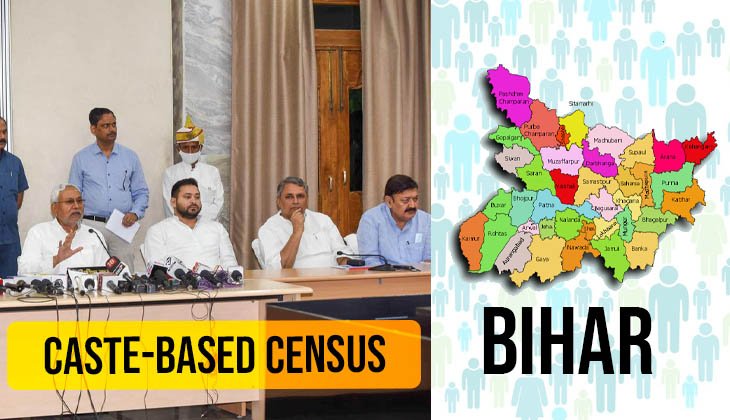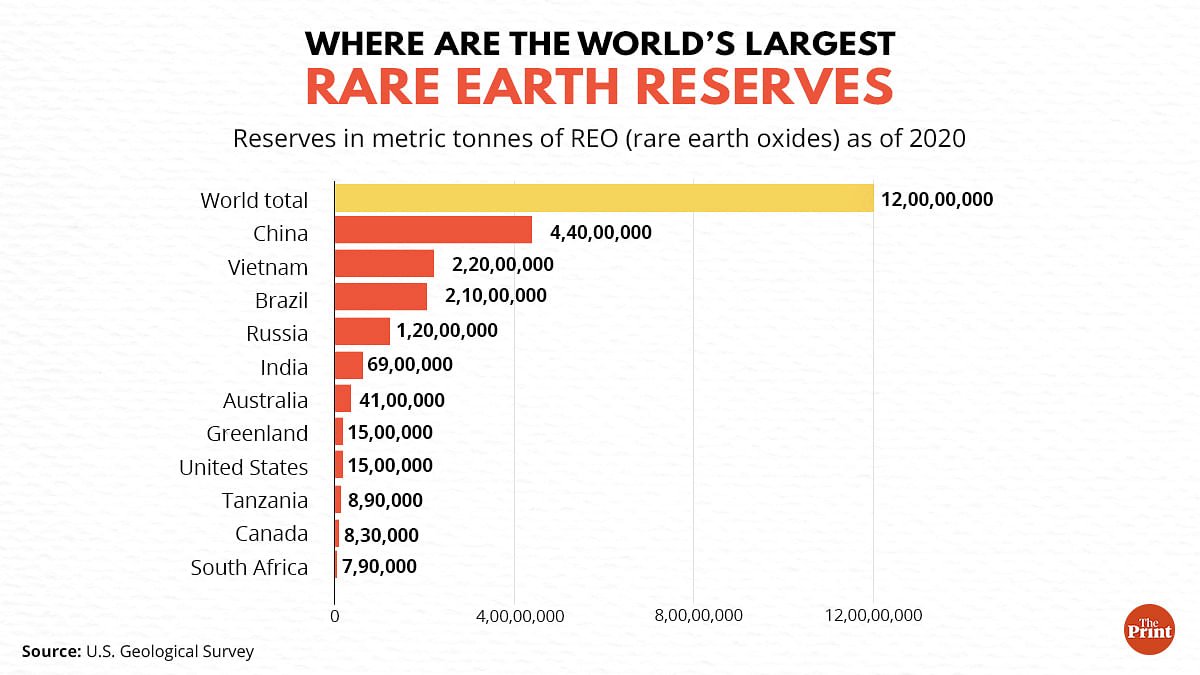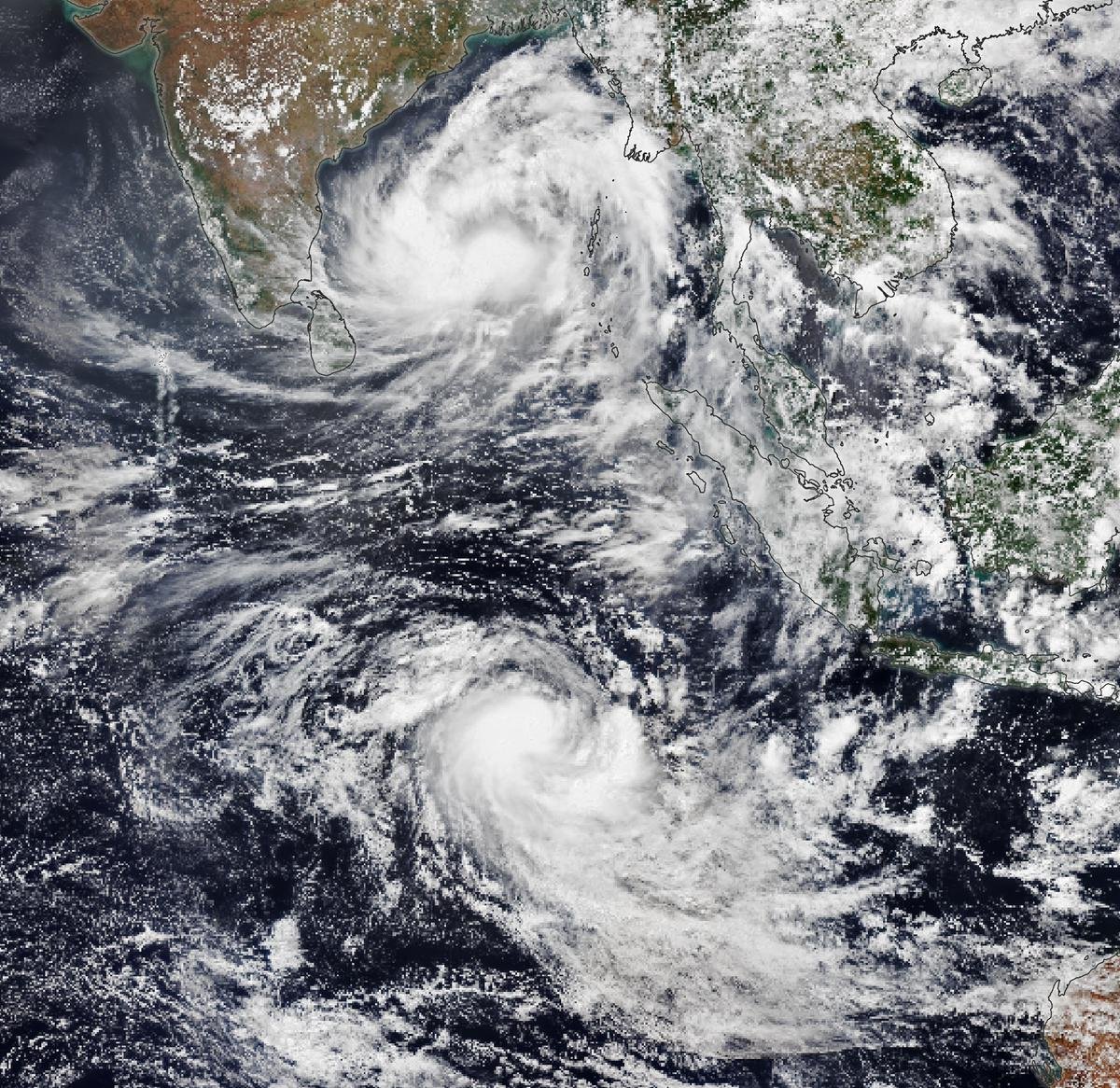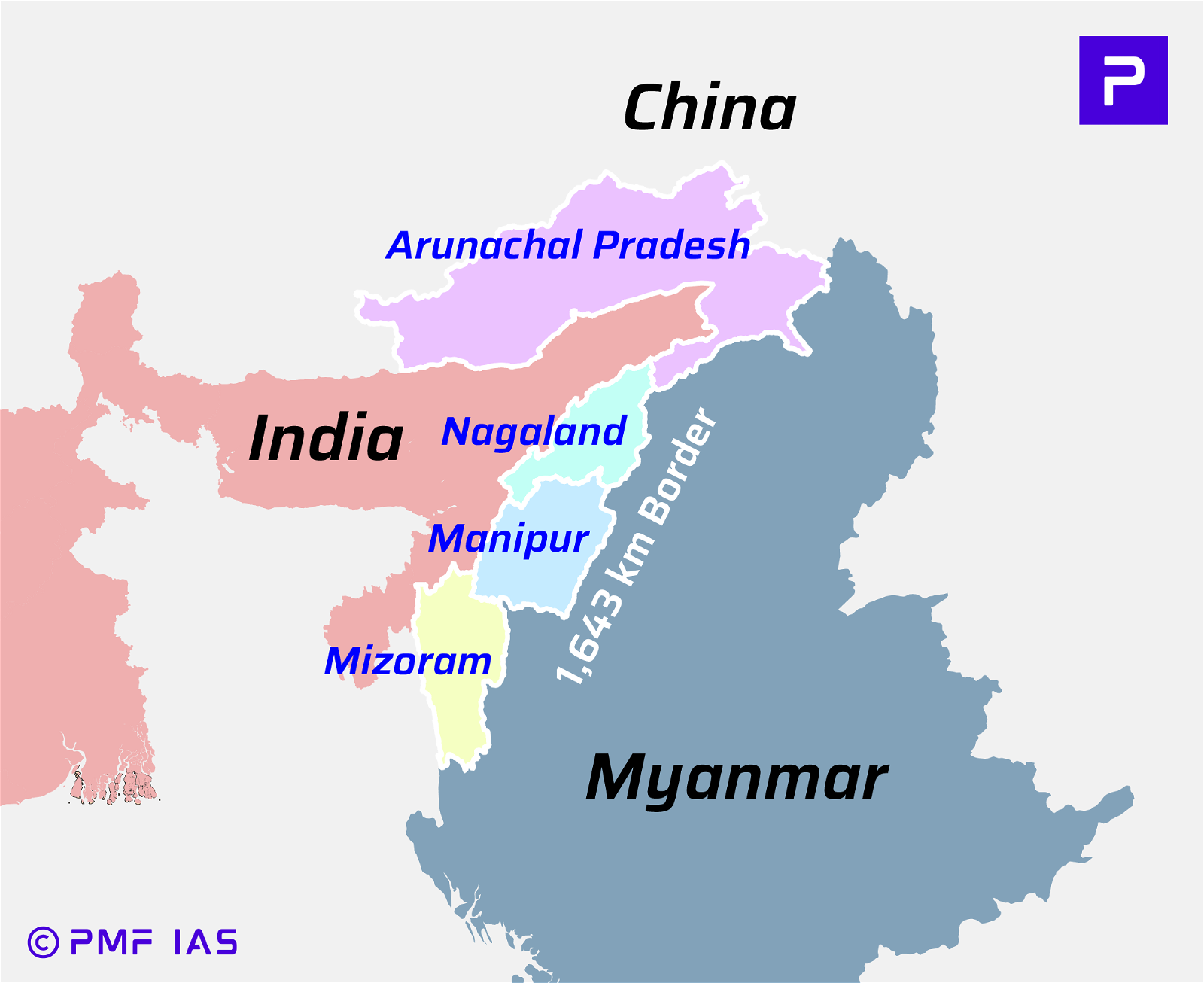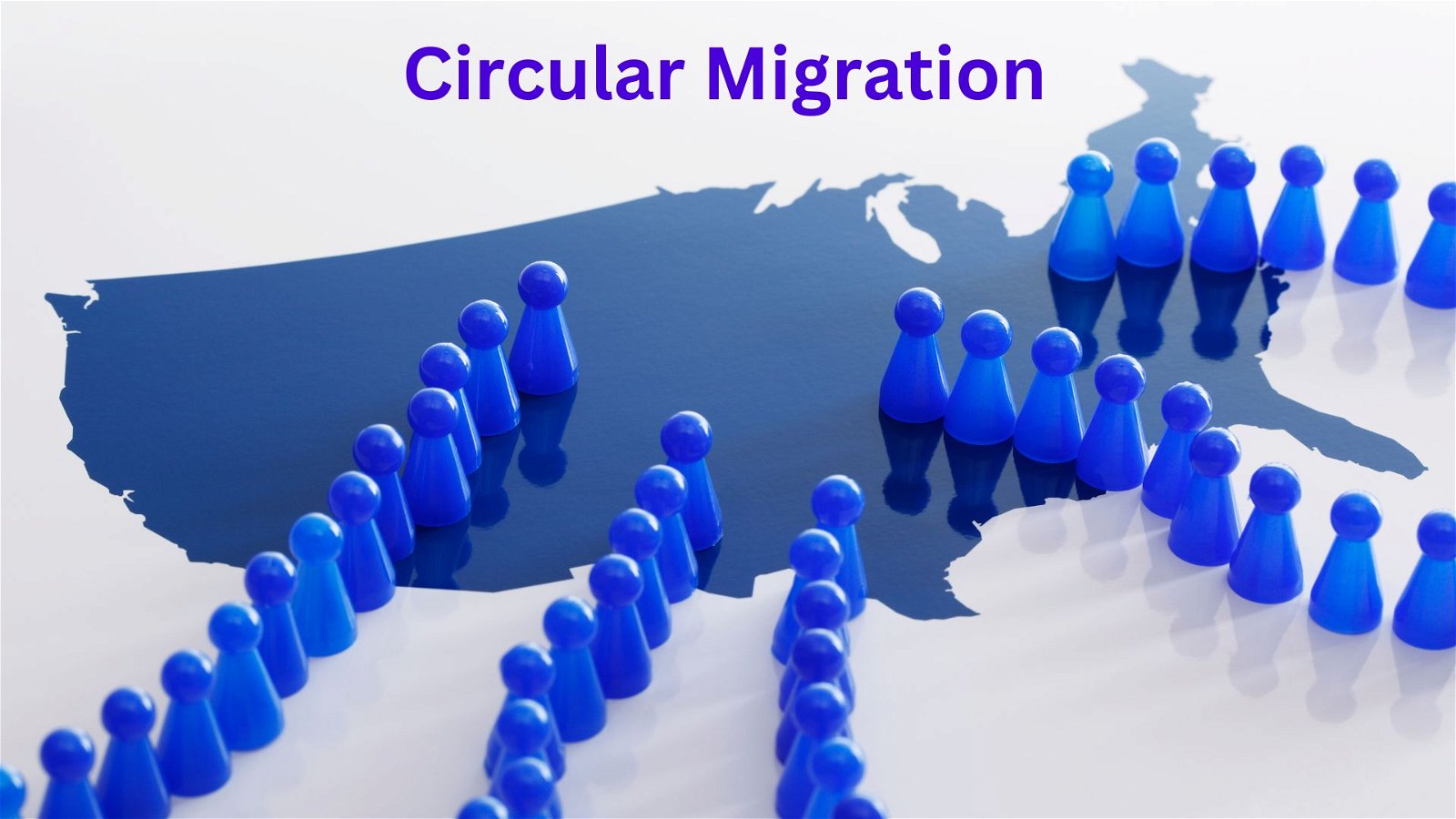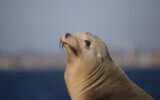
Current Affairs October 19, 2023: Orionid and Eta Aquarid Meteor Shower, Regulation of White Phosphorous, Vizhinjam Seaport Project
Subscribers of "Current Affairs" course can Download Daily Current Affairs in PDF/DOC
Subscribe to Never Miss an Important Update! Assured Discounts on New Products!
Must Join PMF IAS Telegram Channel & PMF IAS History Telegram Channel
{GS1 – Geo – Solar System} Orionid and Eta Aquarid Meteor Shower
- Context (IT I WION): The Orionid meteor shower is set to display its maximum number of meteors on October 21 and 22 mornings.
Orionid Meteor Shower
- This annual meteor shower brightens the night sky every October.
- The Orionids can be observed in the Northern and Southern hemispheres.
- The Orionids are formed when Earth travels through the remnants left by Halley’s Comet, also known as 1P/Halley.
- Every year, towards the end of October, Earth crosses this debris trail, leading to the occurrence of the Orionid meteor shower.
- Halley’s Comet orbits around the sun roughly every 76 years and emits dust particles from its core, leaving a trail of debris.
- Halley’s Comet, about five by nine miles in size, sheds between three to ten feet of material each time it passes through the inner solar system.

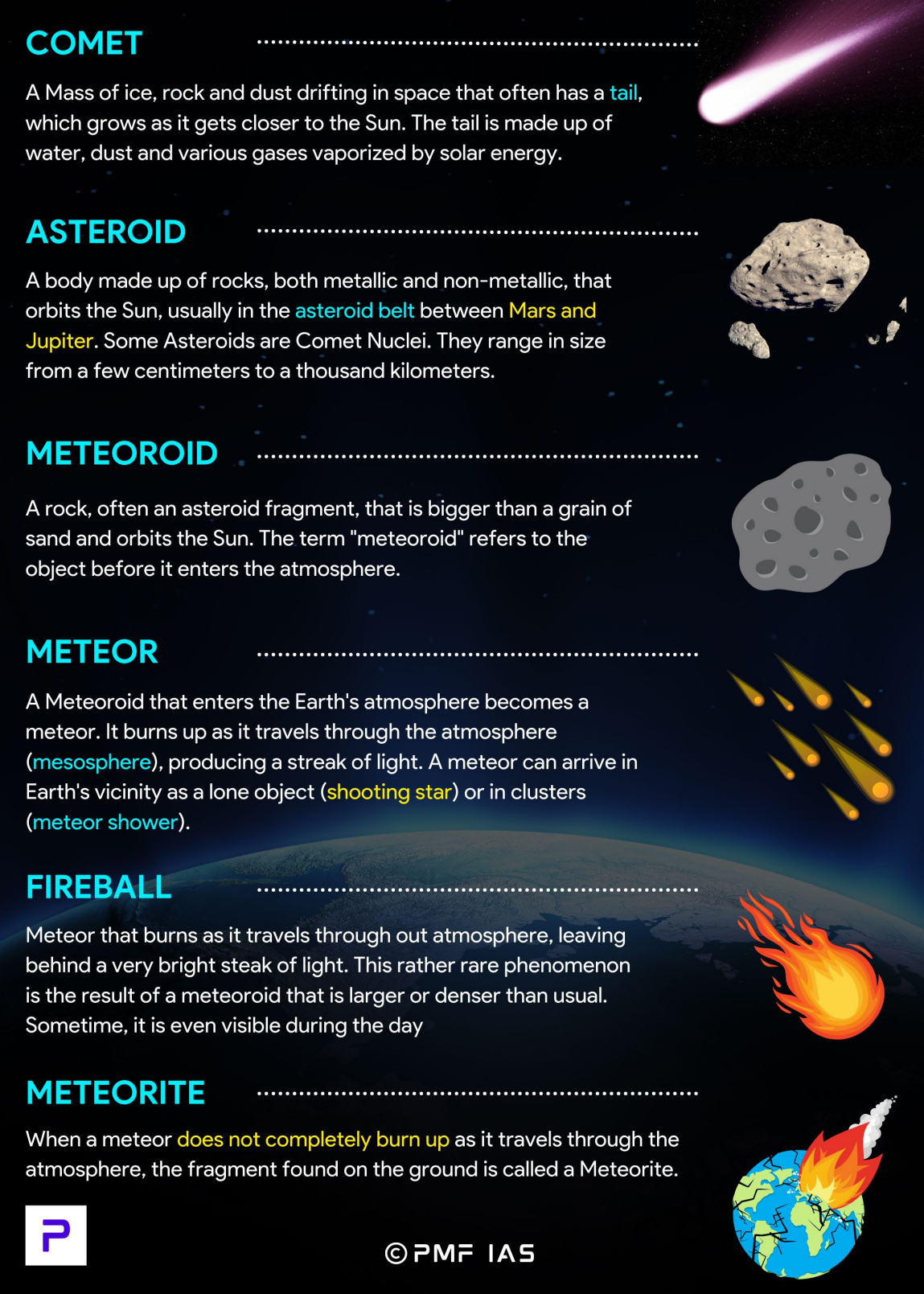
Eta Aquarid Meteor Shower
- The Eta Aquarid meteor shower is an annual celestial event that occurs when Earth passes through the debris left behind by Halley’s Comet.
- This meteor shower is active between April 15 and May 27, peaking on May 5-6.
- The maximum rate for shooting stars in clear skies during the Eta Aquarids will be about 50 per hour, while Orionids produce 20 meteors per hour at their peak.
Comets
- Comets are icy frozen gases (water, ammonia, methane and carbon dioxide) that hold together small pieces of rocky and metallic minerals.
- They have highly elliptical orbits, unlike the planets with near-circular orbits.
- Short-period comets, with an orbital period of a few hundred years, originate in the Kuiper belt.
- Longer-period comets, with orbits of thousands of years, come from the more distant Oort Cloud.
|
- When passing close to the Sun, comets heat up due to the effects of the solar wind upon the nucleus and begin to outgas, displaying a visible atmosphere or coma, and sometimes also a tail.
For more info: CH.2 The Solar System PMF IAS Physical Geography
{GS2 – Governance – Money Laundering} Political Party under Money Laundering
- Context (IE): The ED is considering including the Aam Aadmi Party (AAP) in its money laundering probe linked to the Delhi government’s excise policy case.
- The ED has informed the SC about this consideration.
- The primary allegation against AAP is that it received the proceeds of crime from the excise scam.
- ED can include AAP by invoking Section 70 of the Prevention of Money Laundering Act (PMLA).
- If ED includes the AAP, it will mark the first instance of a political party facing allegations of money laundering under the PMLA.
- There’s no provision to deal with a political party accused or convicted under the PMLA.
How a Political Party Can Be Accused of Money Laundering
- Section 70 of the PMLA deals with offences by companies.
- It holds individuals in charge of a company responsible for contraventions of the Act.
- According to Section 70 of the PMLA, a “company may be prosecuted independently,” meaning even if individuals like Sisodia and others are cleared of charges, the political party AAP can still face separate money laundering prosecution.
- Section 70 defines a company as any corporate body that can encompass individuals’ associations.
- Political parties are considered associations of individuals registered with the Election Commission (EC) under Section 29A of the Representation of the People Act (RPA), 1951.
|
Prevention of Money Laundering Act (PMLA) 2002
|
Challenges for the Election Commission (EC)
- Recognition Suspension: The EC’s powers are limited to suspending or withdrawing a party’s recognition under the Election Symbols (Reservation and Allotment) Order.
- This only applies if the party violates the Model Code of Conduct or disobeys the EC’s orders.
- If the AAP is directly accused of money laundering under the PMLA, there is no existing framework or precedent to guide the management of political parties accused of illegality within the electoral system.
- De-registration Limitation: The EC can de-register a party, but this option is highly restricted. The RPA, 1951, allows the EC to register a party and review its decision under specific conditions, such as:
- Fraud or
- A party’s loss of allegiance to constitutional principles or
- Being declared unlawful by the government under specific laws
{GS2 – IR – India-Sri Lanka} India – Sri Lanka Ferry Service
- Context (TH | IE | TP | TH): India – Sri Lanka ferry service restarted after 40 years with the launch of a passenger ferry service across the Palk Strait.
- This ferry service operates between Nagapattinam (TN) and Kankesanthurai (Jaffna, North SL).
- The name of the vessel used in the service is ‘Cheriyapani’.

History of Ferry Service Between India and Sri Lanka
- The Indo-Ceylon Express or Boat Mail (a combined train and steamer ferry service) ran between Chennai and Colombo from the early 1900s to 1982.
- It was discontinued due to the Sri Lankan Civil War.
Benefits of the Revival of India-Sri Lanka Ferry Service
- Bolster bilateral ties
- Boosting tourism
- Increasing people-to-people relations: The people of northern and eastern Sri Lanka are predominantly Tamil. The ferry service will bring the Tamils of India and Sri Lanka closer.
Issue for Lakshadweep
- Lakshadweep (India’s smallest UT) is already grappling with shortage of passenger vessels.
- Moreover, islanders have been demanding better connectivity between the islands and the Kochi and Beypore mainland ports in Kerala.
- In such a situation, GoI diverted Cheriyapani, previously used for inter-island transportation in Lakshadweep, to the India-Sri Lanka ferry service.
Sri Lankan Civil War
India’s Intervention in the Sri Lankan Civil War
|
{GS2 – IR – Laws} Issues in Regulation of White Phosphorous
- Context (IE | TQ | WION | REUTERS): Global human rights organisations Amnesty International and Human Rights Watch have accused the Israel Defense Forces (IDF) of using white phosphorus munitions in Gaza and Lebanon.
White Phosphorous
- White phosphorus is a waxy, yellowish-to-clear chemical with a pungent, garlic-like odour.
- It does not occur naturally as it is manufactured using phosphate rocks.
- It is pyrophoric that ignites, producing thick smoke and intense 815°C heat.
|
White Phosphorous Munitions
- White phosphorous is used in incendiary weapons by militaries around the world.
- It is also used by the militaries worldwide as a smoke agent.
- It also messes with infrared optics and weapons tracking systems.
Other Uses of White Phosphorous
Incendiary Weapons
|
Concerns with White Phosphorous Munitions
- Severe burns: White phosphorus that remain lodged in the body can reignite if in contact with air.
- Destruction and displacement
- Toxic: If ingested or inhaled, it can cause respiratory problems and even death.
- Indiscriminate weapons: Effects are difficult to control and can quickly spread to civilian areas.

Legal Status of White Phosphorus Munitions and its Loopholes
- White phosphorus munitions use is regulated under the International Humanitarian Law (IHL).
- They are not classified as a chemical weapons since their main use is for creating heat and smoke, not for its toxic effects.
- Thus, its use is governed by the Convention on Conventional Weapons (CCW), specifically Protocol III, which deals with incendiary weapons.
Protocol III of Convention on the Prohibition of Use of Certain Conventional Weapons
- White phosphorous weapons are considered incendiary weapons under Protocol III of the UN Convention on the Prohibition of Use of Certain Conventional Weapons (CCW).
- Protocol III of the CCW (or Incendiary Weapons Protocol) prohibits:
- Use of incendiary weapon against civilian population.
- Use of air-delivered incendiary weapons against military targets within a concentration of civilians.
- Use incendiary weapons to attack forests or plant cover unless it conceals combatants.
Drawbacks of Protocol III of the CCW (or Incendiary Weapons Protocol)
- No blanket ban on incendiary weapons often leads to misuse and targeting of civilians.
- The prohibitions apply only to weapons “primarily designed” to set fires or cause burns. It excludes multipurpose munitions (like white phosphorous).
|
- The distinction between air-dropped and ground-launched incendiary weapons is arbitrary, as both cause similar harm and have been used in recent conflicts.
Convention on the Prohibition of Use of Certain Conventional Weapons (CCW)
|
Convention on the Prohibition of the Development, Production, Stockpiling and Use of Chemical Weapons and on their Destruction (CWC)
- Convention on Chemical Weapons (CWC) is an international treaty that prohibits the development, production, stockpiling, transfer, and use of chemical weapons.
- It also requires the destruction of all existing chemical weapons and production facilities.
- It was adopted in 1993 and entered into force in 1997.
- As of 2023, 193 states have ratified the Convention.
- Organisation for the Prohibition of Chemical Weapons (The Hague, Netherlands) implements it.
Drawback of Convention on Chemical Weapons (CWC)
- It has not listed white phosphorus in any of the three Schedules of Chemical Weapons.
International Humanitarian Law (IHL)
|
{GS2 – MoHFW – Initiatives} National Policy for Rare Diseases
- Context (TH I TOI): Parents of children suffering from Niemann-Pick disease and Infantile hypophosphatasia have asked the government to include it in the National Policy for Rare Diseases.
Infantile Hypophosphatasia
- Infantile Hypophosphatasia is a rare genetic disease in which the patient’s bones and teeth demineralise, making her fragile and prone to fractures.
- While there is no known cure, there’s a chance that a pharma company could begin trials for a drug to cure the disease by the end of 2024.
Niemann-Pick Disease (NPD)
- Niemann-Pick Disease (NPD) is a lysosomal storage disease (LSD) caused by acid sphingomyelinase deficiency (ASMD).
- The disease refers to inherited metabolic disorders in which abnormal amounts of lipids (fatty materials such as waxes, oils, and cholesterol) build up in the brain, spleen, liver, lungs, and bone marrow.
- Treatment: No specific treatment is known, but symptoms are treated.

|
National Policy for Rare Diseases, 2021 (NPRD 2021)
- NPRD, formulated by the Ministry of Health and Family Welfare, was launched in 2021 to treat rare disease patients.
What is a Rare Disease According to NPRD 2021?
- The average prevalence threshold NPRD defines rare diseases is 1 to 6 in 10,000 people.
|
Salient Features of NPRD 2021
Categoristion of Rare Diseases
- The rare diseases have been identified and categorised into three groups, namely:
- Group 1: Disorders amenable to one-time curative treatment.
- Group-2: Diseases requiring long-term/lifelong treatment but relatively lower cost of treatment.
- Group 3: Diseases for which definitive treatment is available but have challenges like making optimal patient selection for benefit, very high cost and lifelong therapy.
Centre of Excellence and Nidan Kendras
- Eight Centres of Excellence have been identified to diagnose, prevent, and treat rare diseases.
- Five Nidan Kendras have been set up for genetic testing and counselling services.
Financial Support
- Up to Rs. Fifty lakhs will be provided to patients suffering from rare diseases and for treatment in any CoEs outside the Umbrella Scheme of Rashtriya Arogaya Nidhi.
- To receive financial assistance, the patient may approach the nearest CoE.
Umbrella scheme of Rashtriya Arogya Nidhi (RAN)
|
{GS2 – MoR – Initiatives} Nanhe Faristey
- Context (PIB): The Railway Protection Force rescued 895 children under Operation ‘Nanhe Faristey’.
- Under operation Nanhe Faristey, RPF finds and rescues children who are lost or separated from their families for various reasons.
- It was launched in 2021 under the Ministry of Railways (MoR).
Other Special Drives of Railway Protection Force (RPF)
Operation “AAHT”
- Operation AAHT stands for “Anti-Human Trafficking.”
- Anti-Human Trafficking Units (AHTUs) have been established at the post-level for this operation.
- AHTUs collaborate with agencies and NGOs dedicated to preventing human trafficking.
Operation “Jeevan Raksha”
- It aims to prevent accidents and save lives at railway stations.
- It focuses on incidents like passengers trying to board moving trains and people attempting suicide by getting in front of trains.
Operation “Mahila Suraksha” (Women’s Safety)
- It focuses on enhancing the security of women passengers on Indian Railways.
- Dedicated teams of female RPF personnel are formed across all zonal railways.
- The “Meri Saheli” initiative is launched to ensure the safety of women travelling alone or with minors on long-distance trains for the entire journey.
Operation “Uplabdh”
- It focuses on improving ticket availability and enhancing passenger security.
- It addresses difficulties ordinary people face in getting railway tickets due to bulk purchasing by touts.
Operation “NARCOS”
- It aims to combat the smuggling of narcotics through railways.
- RPF has been authorised to perform searches, seizures, and narcotics-related arrests under the Narcotic Drugs and Psychotropic Substances (NDPS) Act, 1985, since 2019.
- It also concentrates on preventing narcotics-related activities within the railway system.
Operation “Yatri Suraksha” (Passenger Safety)
- It aims to ensure safe and secure travel for railway passengers.
- RPF is accessible through various channels, including Toll-Free 139 and social media platforms like Twitter, Facebook, and Instagram.
- Passengers can contact RPF for assistance and resolution of security and other concerns.
Operation “SEWA”
- It is RPF’s initiative to assist specific groups during train travel.
- It aims to make train travel more accessible and comfortable for those in need.
- It focuses on helping elderly citizens, women, physically disabled individuals, and sick/injured persons.
- It provides wheelchairs, stretchers, medical aid, ambulances, medicines, and infant food.
Railway Protection Force (RPF)
|
{GS2 – Polity – IC – Parliament} Ethics Committee in Parliament
- Context (IE I TH): The Ethics Committee in Parliament was established following a resolution passed at the Presiding Officers Conference in New Delhi in 1996.
- Both houses of parliament have their own respective Ethics Committees.
- Lok Sabha’s Ethics Committee: It was formed in 2000 and comprises up to fifteen members nominated by the Speaker. The term of these members does not exceed one year.
- Rajya Sabha’s Ethics Committee was constituted earlier, in 1997. It comprises ten members whom the Chairman of the Rajya Sabha nominates and serves for a term not exceeding one year.
Function of Ethics Committee
- The primary functions of these committees are to monitor and investigate cases (Any member can make complaints) of the member’s moral and ethical conduct.
- However, only a Member of Parliament can be examined for misconduct by the Ethics Committee.
Limitations of the Ethics Committee
- The work of the Ethics Committee sometimes overlaps with the Committee on Privileges, as both committees may handle matters related to the conduct of MPs.
- More serious complaints, such as corruption or severe breaches of privilege, may be referred to the Committee on Privileges or special purpose panels.
|
{GS2 – Vulnerable Sections – Women} Divorce by Muslim Women
- Context (IE): The SC will examine a 2021 ruling of the Kerala HC, which said that a Muslim woman’s divorce by way of “khula” is “absolute” and “does not depend upon the consent of the husband”.
- Kerala HC affirmed a Muslim woman’s right to pronounce extrajudicial divorce through “khula”.
What is Khula?
- Khula refers to the right of a Muslim woman to divorce her husband unilaterally.
- This is one of the forms of extrajudicial divorce available to Muslim women.
- Other forms of extrajudicial divorce available to Muslim women are:
- Talaq-e-tafwiz
- Mubara’at
- Faskh
|
- Khula is similar to the right of Muslim men to divorce, known as talaq.
- However, scholars differ on the way khula has to take place.
- While some believe that the husband’s consent is a prerequisite for a valid khula.
- Others believe that a wife’s right to khula is analogous to the husband’s right to pronounce talaq and doesn’t need the husband’s consent.
What does the Shariat Act say?
- The Muslim Personal Law (Shariat) Application Act, 1937, recognises judicial/extrajudicial divorce.
- However, despite the existence of the Sharia Act, the Hanafi school did not allow women to obtain a decree from the court to dissolve their marriage.
- To resolve this situation, the Dissolution of Muslim Marriages Act 1939 was enacted.
Muslim Marriages Act 1939
- It was passed to clarify and consolidate the provisions of the law relating to the dissolution of marriage by Muslim women.
- The Act extended the right to extrajudicial divorce to all Muslim women, regardless of the school of Islamic jurisprudence they followed.
Background of the Recent Case
- In 1972, the Kerala HC, in ‘K C Mohyin vs Nafeesa and Others,’ denied Muslim women the right to seek extrajudicial divorce under the 1939 Act.
- This ruling prevented the women of Kerala from invoking their right to extrajudicial divorce by way of khula, permitted under personal law.
- In 2021, the Kerala HC rejected the 1972 verdict as bad in law and said that the 1939 Act’s objective is to enlarge Muslim women’s rights, and the courts must give effect to that.
{GS3 – IE – Taxation} Telcos Licence Fee Tax
- Context (IE I HBL): SC has determined that the telecom company’s payments of entry and variable annual license fees should be classified as capital expenditures (not revenue expenditures).
- Therefore, this capital expenditure can be taxed as per Section 35ABB of the Income Tax Act.
- This ruling was a setback to telecom firms operating and may lead to additional tax obligations, estimated at approximately $1 billion in the current fiscal year.

National Telecom Policy of 1999
- According to the National Telecom Policy 1999, telecom operators were obligated to for one-time license fee payment to commence their operations, in addition to the variable annual license fee.
- This marked a departure from the previous policy (1994), where they were required to pay a lump-sum license fee, which came under capital expenditure.
- The SC observed that the transition from the 1994 telecom policy to the 1999 policy and the variable nature of these payments do not alter the fundamental character of the license fee.
What Will Impact Telcos as a Result of the SC Ruling?
- Telecom companies classify license fees as operational expenses, allowing them to make deductions based on variable license fees for year-to-date tax liability calculations.
- Following the court’s decision, license fees as a capital investment require a provision to spread the expenses over the license’s duration.
- At first glance, this accounting adjustment is expected to increase EBITDA/PBT and result in a higher initial tax outflow, potentially impacting cash flow.
- However, these effects are anticipated to level out over the course of the license term.
|
{GS3 – Infra – Ports} Vizhinjam International Seaport Project
- Context (IE | TH | HT): Zhen Hua 15 (a Hong Kong vessel) became the first ship to be docked at the Vizhinjam International Seaport.
- Located near Thiruvananthapuram, Vizhinjam Port is India’s first deepwater trans-shipment port.
- Adani Ports and SEZ Private Ltd (India’s largest commercial ports operator) is building this multipurpose seaport on a DBFOT model.
- The port is expected to compete with Colombo, Singapore, and Dubai.
- Its capacity in the first phase is 1 million TEU, which can be increased to 6.2 million TEU.


|
Advantages of Vizhinjam International Seaport as Trans-shipment Port
- Natural depth: The port has a natural depth of 18 m which means it can accommodate large container ships without dredging.
- Strategic location: It is on the southern tip of the Indian Peninsula, near the international shipping route connecting Europe, the Persian Gulf, and the Far East, facilitating efficient global trade.
- Good connectivity: The port is well-connected to the rest of India by road and rail.
Why India Needs a Trans-shipment Port
- India has 13 major ports but lacks a mega-port for ultra-large container ships. Hence, 75% of India’s trans-shipment cargo is managed at foreign ports like Colombo, Singapore, and Klang.
- The benefits of the development of an Indian trans-shipment port are:
- Forex savings
- Foreign direct investment
- Increased economic activity at other Indian Ports
{Prelims – A&C – Culture} Kati Bihu
- Context (PIB): Kati Bihu is celebrated in Assam, also called Kongali Bihu (Kongali: poor).
- “Kati” means to cut, marking the time of rice sapling relocation.
- There are two other Bihu festivals in Assam:
- Bhogali or Magh Bihu in January
- Rongali or Bohag Bihu in April
- Kati Bihu, celebrated amidst food scarcity season, symbolises hope and faith, marked by the glow of lit earthen lamps near the Tulsi plant and illuminated houses.
- A special lamp called Akash Banti (Sky candle) is lit in the paddy fields, believed to guide ancestors towards heaven.
{Prelims – Envi – Species} Amur Falcon
- Context (HT): The migration of Amur falcons usually arrives in Northeast India in mid-October and roosts till the end of November.
- Amur falcon is the world’s longest-distance migrating raptor.
- Distribution: East, South and Southeast Asia.
- Nagaland is known as the “Falcon Capital of the World”.
- Habitat: Open woods and marshes.
- Threats: Illegal trapping and killing during migration and habitat loss.
- Conservation Status: IUCN: LC | CITES: Appendix II | CMS: Appendix II | WPA: Schedule IV

{Prelims – In News} Conscription
- Context (IE): Several Israeli citizens are returning to their homeland with the intention of helping the Israeli Defence Forces (IDF).
- Conscription is compulsory enrolment in the country’s military services.
- Israel has a provision for mandatory military services.
- Except for North Korea and Israel, mandatory service worldwide is restricted to men only.
- Because of Israel’s history with its neighbours and the relatively small population, it trains all its citizens and keeps a large military. Citizens are expected to be in the military for 24-48 months.
- While provisions for conscription exist in many other countries, including major military powers like the US, Russia and China, they are either meant only for times of emergency or are not enforced.




![PMF IAS Environment for UPSC 2022-23 [paperback] PMF IAS [Nov 30, 2021]…](https://pmfias.b-cdn.net/wp-content/uploads/2024/04/pmfiasenvironmentforupsc2022-23paperbackpmfiasnov302021.jpg)


